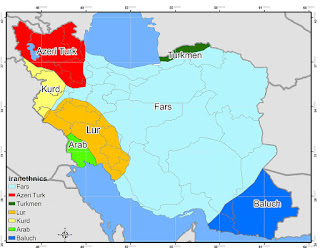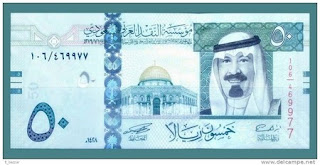Iranian Arab soccer pitch emerges as flashpoint in Saudi-Iranian proxy war
Police action in Awamiyah in Saudi Arabia's Eastern Province
By James M. Dorsey
A soccer pitch in the Iranian city of Ahvaz, home to Iran’s
Arab minority, has emerged as a flashpoint of anti-government protest at a time
of rising Arab-Iranian tensions over the status of Shiite Muslim minorities in
the Arab world, the crisis in Yemen, and the outlines of a multilateral
agreement that would curb Iran’s nuclear program and return the Islamic
republic to the fold of the international community.
Soccer fans clashed with security forces last Friday after a
match between state-owned Foolad FC and Teheran’s Esteghlal FC in Ahwaz, the capital of the Iranian province
of Khuzestan for the second time is as many weeks, according to the National
Council of Resistance in Iran, a coalition of opposition groups dominated by
the Mujahedeen-e-Khalq, a group that lost much of its credibility after it was
expelled from France in 1986 and moved its operations to Iraq at a time that Iraq
was at war with Iran.
The protest was sparked by mounting anger among ethnic Arabs
in oil-rich but impoverished Khuzestan that constitutes part of Iran’s border
with Iraq. Ethnic Arabs have long complained that the government has failed to
reinvest profits to raise the region’s standards of living.
The World Health Organization (WHO) identified Ahwaz in 2013
as Iran’s most polluted city. Authorities distributed in February tens of
thousands of surgical masks and more than 26,000 gallons of milk in Ahvaz, a
city of more than 1 million, when it was hit by a severe sand storm that forced
the closure of schools and offices, the cancellation of flights, and prompted scattered
protests.
In a sign of where Iranian Arab loyalties lie, environmental
activists blamed Iraq rather than the Iranian government for the degradation of
Khuzestan that they said was a consequence of Iraq’s failure to prevent the
loss of marshlands and the spread of desert terrain.
Iranian Arabs nevertheless charge that they are being
discriminated against because of Iranian government suspicions that they are
susceptible to foreign Arab influence. That suspicion is rooted in Iraqi leader
Saddam Hussein’s bloody eight-year war against Iran that ended in 1988. Saddam
falsely expected at the time that Iranian Arabs would welcome the opportunity
to gain independence from Iran.
The Iranian Arab refusal to side with Saddam failed however
to earn them the credit they deserved. They have since often framed their criticism
of government policies in ethnic and nationalist terms that have served to strengthen
government distrust amid multiple proxy wars between Saudi Arabia and Iran on
the battlefields of Yemen, Syria and Iraq; Gulf accusations of meddling by Iran
in their backyard by supporting the rebel Houthis in Yemen, fuelling protest in
majority Shiite Bahrain and the oil-rich, predominantly Shiite Eastern Shiite
militias in Iraq battling the Islamic State, the jihadist group that controls a
swath of Syria and Iraq.
A policeman was killed and 30 protesters injured on Saturday
when police allegedly attacked the Shiite village of Awamiyah in the Eastern
Province amid reports of a planned demonstration against the Saudi military intervention
in Yemen, according to the Saudi interior ministry and activists. Shiites, who
assert that they suffer from discrimination in employment and education,
account for up to 15 percent of the kingdom’s population. The government has
repeatedly rejected allegations of discrimination and claimed that it was
confronting an armed uprising in the Eastern Province.
In a recent article in the English-language Saudi newspaper,
Arab News, UAE businessman Khalaf Ahmad Al Habtoor called for the liberation of
the five million Arabs in Khuzestan which the writer described as Arabistan.
Mr. Al Habtoor asserted that the Arabs were “struggling to survive under the
Persian yoke in an Arab region bordering Iraq and the Arabian Gulf.”
He charged that “although Arabistan provides Iran with 80
percent of its oil requirements as well as half of its gas, its sons are
exploited and oppressed; their human rights tramped upon, their very identity
in danger of being obliterated. Iran’s policy of ethnic discrimination combined
with its Persian resettlement endeavours has resulted in turning the Ahwazi
Arabs into an economic and social underclass.
Numerous Arab villages are without schools and those ‘lucky’
enough to attend school are educated in Farsi. Some 80 percent of Ahwazi Arab
women are illiterate as opposed to 50 percent of Ahwazi men. Over thirty
percent of the under-30s are unemployed in this heavily industrialized region,
primarily because Persians receive priority and jobs often advertised outside
the governorate,” Mr. Al Habtoor said.
“Thousands are without access to drinking water, because
rivers have been diverted to arid Persian provinces. Their streets open sewers;
many are deprived of electricity and gas… It’s no wonder that Ahwazi Arabs are
now driven to protest against such blatant discrimination,” he added.
Friday’s soccer protest followed a similar incident two
weeks ago during an Asian championship League qualifier between Ahwaz’s Foolad
FC and Al Hilal of Saudi Arabia. Fans defiantly expressed support for Al Hilal and
burnt pictures of Ayatollah Ruhollah Khomeini, the late spiritual leader who
spearheaded the 1979 Iranian revolution that toppled the Shah Mohammad Reza
Pahlavi, and his successor, Ayatollah Ali Khamenei. Fans also sported banners
emphasizing the Arab character of Ahvaz.
Unrest in Ahwaz has been long simmering. The popular revolts
of the Arab world in 2011 that toppled the autocratic leaders of Tunisia,
Egypt, Libya and Yemen reverberated in Khuzestan where protesters commemorated
anti-government demonstrations in 2005. Activists who called in April 2011 for
a ‘day of rage’ in Ahwaz were confronted by security forces who reportedly
killed and wounded scores.
Habib Jaber Al-Ahvazi, a spokesman for the Arab Struggle
Movement for the Liberation of Ahwaz (ASMLA), a group that demands independence
for Ahvaz and is believed to be responsible for a series of bomb attacks in the
city in 2005, 2006 and 2013, last month told online Arab nationalist Ahvaz.tv
that the soccer protests were part of an “ongoing confrontation between
demonstrators and the forces of the Persian occupation.”
Iranian analysts suspect Saudi Arabia of instigating the
soccer protests in Khuzestan as part of an effort to destabilize and dismember
Iran. The analysts note that ASMLA operatives have maintained contacts with rebels
fighting Syria’s Al Assad regime. ASMLA has also expressed support for
insurgents in Iran’s Baluchi and Kurdish provinces whom the government in
Tehran sees as part of US and Gulf Arab covert operations aimed at weakening it.
Iran’s Press TV appeared to counter reports of the soccer
protest by reporting the same day that hundreds of protesters in Tehran, Ahwaz,
Ardabil, Mashhad and Tabriz had demonstrated against the Saudi military campaign
in Yemen.
James M. Dorsey is a Senior Fellow at the S. Rajaratnam
School of International Studies (RSIS), Nanyang Technological University in
Singapore, co-director of the University of Würzburg’s Institute for Fan
Culture, a syndicated columnist, and the author of The Turbulent World of Middle East
Soccer blog





Dear Dr. James
ReplyDeleteThis article is good and excellent assessment of the situation now, and my own view is that behind all the events in the region are Iran and Saudi Arabia in order to protect their own interests in order to keep open to them in order to trade and steal their wealth by stirring up sectarian strife in those countries by the markets of these countries mercenaries and weaken the regular armies.
Best Regards
Ali, thanks for your comment. Rivalry between Iran and Saudi Arabia certainly plays a role but I would not downplay the local and domestic issues
ReplyDeleteCertainly local and domestic issues play an important role, which is being exploited by these two countries to interfere with other countries, they interfere with the pretext of religion, or protect its borders and others.
ReplyDeleteThe core issue is domestic. One can only exploit if there is a problem. Attacking the symptoms without treating the issue risks escalation
ReplyDelete